Check out Lobo on YOU TUBE:
•••••••••••••••••••••••••••••••••••••••••••••••••••••••••••••••
www
.youtube.com/user/travelswithlobo
**********************************************************
First Time Reader? ......here is the background to this series of blogs:
http://www.travelpod.com/travel-blog-entries/lobo/9/1233502800/tpod.html
Mexico: 23 Destinations to Spend the Winter Months
San Cristobal de Las Casas
no. 19 of 23 destinations (this is not a ranking)
Na Bolom - House of the Jaguar
Part 4 of 5
-----------------------------------------------------------------------------
We all admire someone outside of our family. The source of admiration may be entertainers, athletes, entrepreneurs, politicians – yes – politicians, religious leaders, intellectuals, historical figures, literary figures, inventors etc.
For instance there is David Thompson (1770-1857) whom I have dubbed the "ultimate traveler". In the Canadian Rocky Mountains, along the Icefields Highway, there is a plaque indicating that he traveled over 80,000 kilometers in his explorations of the Canadian West. Considering that the traveling was done in unknown, mostly hostile territory by canoe, horseback or walking, my moniker - "the ultimate traveler" - is well earned
.
Another one that comes to mind is Alexander von Humboldt (1776-1859) after whom a street is named here in Victoria, BC. He traveled widely in the exploration of Central and South America and is considered to be the founder of modern geography. There are many landmarks named after Humboldt and of course there is the Humboldt Currant.
http://geography.about.com/od/historyofgeography/a/vonhumboldt.htm
There is also the man whose statue is located along the Inner Harbor of Victoria just across from the Empress Hotel. I am referring to Captain James Cook who made three lengthy voyages, the last of which was started in 1776, to explore the regions of the Pacific Ocean.
http://www.lucidcafe.com/library/95oct/jcook.html
What all of these explorers have in common is the desire to discover the unknown - in geography and in culture
. It was Captain Cook's entry into the Hawaiian culture as a God that eventually cost him his life. (When that God-like perception was replaced by his mortality it cost him his life in 1779).
Other explorers came to a strange land and made it their own not in the sense of conquering for king and country but in the sense of coming to understand and to preserve much like Dr. Livingstone.
Dr. Livingstone (1813-1876) did not come to Africa to conquer but to discover (e.g. Victoria Falls and the source of the Nile), to understand, to convert and to help. Livingstone would have been quite happy if Stanley had not come bursting through the jungle to “rescue” him and greet him with the now famous “Dr. Livingstone I presume”.
http://en.wikipedia.org/wiki/David_Livingstone
In the same genre I have to think of Albert Schweitzer (1875 –1965), the Nobel Peace Prize winner, who pursued a life of intellectual and musical excellence in gentile Europe
. However he chose to distinguish himself by establishing a jungle hospital in Lamebrain, Gabon to which he devoted most of his energies.
http://www.answers.com/topic/albert-schweitzer
All of the above “explorers” left behind the comforts of home to devote themselves to the discovery of the unknown. As a result they greatly increased the collective knowledge of the geography and culture of their new surroundings thereby becoming experts in their chosen fields. They not only discovered but became an integral part of that new world.
I put the anthropologists Gertrude Duby and her husband Franz Blom in the same category for what they did for the discovery and preservation of the Mayan culture.
Their origins were Swiss and Danish respectively and they could have easily lived their lives in these wonderful countries. Instead they independently chose to come to Mexico/Guatamala to devote their lives to the study and preservation of the Mayan world. It was in their engaging in this pursuit that they met and eventually married. In the process these two Europeans became more Mayan than the present generation of Mayans in the context of the detailed knowledge that they were able to accumulate about the “Mundo Maya”.
The fruition of their work is the so-called “Na–Bolom” that is a Mexican non-profit organization that in the spirit of its founders Frans Blom and Gertrude Duby is dedicated to protect, preserve and promote the cultures of the area
.
Na–Bolom offers a variety of services to the visitor that include individually decorated guest rooms, a cafeteria/restaurant and a guided tour of Na–Bolom. The tour includes five exhibit galleries where one can appreciate such varied collections as pre-Colombian Mayan art, Lacandon artifacts and religious painting from the colonial era. Also included are the chapel, the organic garden from which Na–Bolom obtains all its vegetables, the tree nursery and the library that is open to the public for consultation. The library contains 10,000 volumes dedicated to the history, culture and anthropology of the region.
The museum is also a collection of artifacts, photos and writings of the combined works of Blom and Duby.
Frans Blom came from a Danish family of means who sent him to Mexico as a life experience in 1919. Fieldwork in oil discovery brought him in contact with the Mayan world and its treasure trove of archeology and artifacts. His findings led him to an academics life in the United States.
He had a special interest in finding the “Rosetta Stone” of the Mayan language. It is something he worked on for many years thereby becoming an expert in the field. In the end he did not crack the code of the Mayan hieroglyphics and one is left to wonder whether the demons of alcoholism and a divorce (not from Gertrude Duby) in the 1930’s may also have played a part in that
.
It was at this stage in his life - a low point - that he left the United States and moved to Mexico to once again pursue his passion for the Mayan civilization.
It was the jungle dwelling Lacandon, unique among the Maya because they had not fallen to the Spanish conquest, which caused the paths of Gertrude Duby and Frans Blom to cross. This led to further combined expeditions to the Lacandon jungle and their eventual marriage.
Expeditions cost money and it was thus that in 1951 they converted an old monastery in San Cristobal de las Casas into an inn that they named Casa Na-Bolom. From there one thing led to another to make it the centre of excellence in Mayan studies to which it has developed.
It all makes for a fascinating story that can be read in detail at:
http://74.125.155.132/search?q=cache:BLNMMhrWINgJ:www.mesoweb.com/pari/members/archive/PARI0402b
.pdf+Frans+Blom&cd=2&hl=en&ct=clnk&gl=ca&client=firefox-a
While the spot light is on Frans Blom what is remarkable about this story are the accomplishments of Gertrude Duby who came closer to capturing the essence of the Lacandon than anyone else.
http://www.geocities.com/rainforest/3134/blom.html
http://en.wikipedia.org/wiki/Gertrude Blom
As I said in an earlier blog, San Cristobal is calm, but Na-Bolom is even calmer. It is truly an oasis or a little Shangri-La that even reminds me of a Buddhist meditation center. It is truly a fitting tribute to these two remarkable people.
---------------------------------------------------
Feedback: travelswithlobo@yahoo.com
-------------------------------------------------
Coming Soon: San Cristobal de Las Casas - The Market
San Cristobal de Las Casas - Na Bolom Museum
Monday, January 19, 2009
 San Cristobal de las Casas, Central Mexico and Gulf Coast, Mexico
San Cristobal de las Casas, Central Mexico and Gulf Coast, Mexico
Other Entries
-
163Barra de Navidad - Wow! Did We Like This Place
Jan 0514 days prior Barra de Navidad, Mexicophoto_camera88videocam 0comment 0
Barra de Navidad, Mexicophoto_camera88videocam 0comment 0 -
164Barra de Navidad - A Beautiful Tropical Feeling
Jan 0514 days prior Barra de Navidad - A Beautiful Tropical Feeling, Mexicophoto_camera51videocam 0comment 3
Barra de Navidad - A Beautiful Tropical Feeling, Mexicophoto_camera51videocam 0comment 3 -
165Barra de Navidad - The Beach and Malecón
Jan 0514 days prior Barra de Navidad, Mexicophoto_camera58videocam 0comment 0
Barra de Navidad, Mexicophoto_camera58videocam 0comment 0 -
166Melaque - A Lesson on "Ejido Land"
Jan 0613 days prior Barra de Navidad, Mexicophoto_camera62videocam 0comment 5
Barra de Navidad, Mexicophoto_camera62videocam 0comment 5 -
167Colima - La Ciudad de las Palmeras
Jan 0613 days prior Colima, Mexicophoto_camera93videocam 0comment 0
Colima, Mexicophoto_camera93videocam 0comment 0 -
168Comala - "Pueblo Magico"
Jan 0712 days prior Comala, Mexicophoto_camera61videocam 0comment 1
Comala, Mexicophoto_camera61videocam 0comment 1 -
169Cuyutlán- Some Like it Remote and Memories of Hell
Jan 0712 days prior Cuyutlán, Mexicophoto_camera67videocam 0comment 3
Cuyutlán, Mexicophoto_camera67videocam 0comment 3 -
170Zihuatanejo - The Yang Next Door to Ixtapa
Jan 0910 days prior Zihuatanejo, Mexicophoto_camera40videocam 0comment 0
Zihuatanejo, Mexicophoto_camera40videocam 0comment 0 -
171Acapulco - Still Number One?
Jan 109 days prior Acapulco, Mexicophoto_camera51videocam 0comment 1
Acapulco, Mexicophoto_camera51videocam 0comment 1 -
172Puerto Escondido - The Antithesis of a Resort Town
Jan 118 days prior Puerto Escondido, Mexicophoto_camera84videocam 0comment 5
Puerto Escondido, Mexicophoto_camera84videocam 0comment 5 -
173Huatulco - Last Destination on the Pacific Coast
Jan 127 days prior Huatulco, Mexicophoto_camera96videocam 0comment 0
Huatulco, Mexicophoto_camera96videocam 0comment 0 -
174Oaxaca - City of the Four "C"s - Coffee, Chocolate
Jan 145 days prior Oaxaca, Mexicophoto_camera239videocam 0comment 0
Oaxaca, Mexicophoto_camera239videocam 0comment 0 -
175Oaxaca - Monte Alban
Jan 163 days prior Oaxaca, Mexicophoto_camera58videocam 0comment 0
Oaxaca, Mexicophoto_camera58videocam 0comment 0 -
176Oaxaca - San Agustin Etla - "Ersatz" Provence
Jan 163 days prior Oaxaca , Mexicophoto_camera113videocam 0comment 0
Oaxaca , Mexicophoto_camera113videocam 0comment 0 -
177San Cristobal de Las Casas - The Aura
Jan 172 days prior San Cristobal de las Casas, Mexicophoto_camera83videocam 0comment 0
San Cristobal de las Casas, Mexicophoto_camera83videocam 0comment 0 -
178San Cristobal de Las Casas - Further Reflections
Jan 181 day prior San Cristobal de las Casas, Mexicophoto_camera72videocam 0comment 0
San Cristobal de las Casas, Mexicophoto_camera72videocam 0comment 0 -
179San Cristobal de Las Casas - The Excursions
Jan 181 day prior San Cristobal de las Casas, Mexicophoto_camera142videocam 0comment 0
San Cristobal de las Casas, Mexicophoto_camera142videocam 0comment 0 -
180San Cristobal de Las Casas - Na Bolom Museum
Jan 19 San Cristobal de las Casas, Mexicophoto_camera43videocam 0comment 0
San Cristobal de las Casas, Mexicophoto_camera43videocam 0comment 0 -
181San Cristobal de las Casas - The Market
Jan 201 day later San Cristobal de las Casas, Mexicophoto_camera36videocam 0comment 0
San Cristobal de las Casas, Mexicophoto_camera36videocam 0comment 0 -
182Campeche - The Cadiz of Mexico
Jan 201 day later Campeche, Mexicophoto_camera48videocam 0comment 0
Campeche, Mexicophoto_camera48videocam 0comment 0 -
183Campeche - The Malecon
Jan 201 day later Campeche , Mexicophoto_camera49videocam 0comment 0
Campeche , Mexicophoto_camera49videocam 0comment 0 -
184Campeche - Outside Centro Historico
Jan 212 days later Campeche , Mexicophoto_camera64videocam 0comment 3
Campeche , Mexicophoto_camera64videocam 0comment 3 -
185Merida - Where Were You On This Day?
Jan 234 days later Merida, Mexicophoto_camera29videocam 0comment 2
Merida, Mexicophoto_camera29videocam 0comment 2 -
186Merida - High Expectations and First Impressions
Jan 234 days later Mérida, Mexicophoto_camera95videocam 0comment 0
Mérida, Mexicophoto_camera95videocam 0comment 0 -
187Merida - The Remarkable Paseo de Montejo
Jan 245 days later Merida, Mexicophoto_camera114videocam 0comment 0
Merida, Mexicophoto_camera114videocam 0comment 0 -
188Playa del Carmen - Is This the Place For You?
Jan 256 days later Playa del Carmen, Mexicophoto_camera65videocam 0comment 0
Playa del Carmen, Mexicophoto_camera65videocam 0comment 0 -
189Playa del Carmen - the Beach
Jan 256 days later Playa del Carmen, Mexicophoto_camera56videocam 0comment 0
Playa del Carmen, Mexicophoto_camera56videocam 0comment 0 -
190Puerto Morelos - Dream Come True
Jan 278 days later Puerto Morelos, Mexicophoto_camera50videocam 0comment 0
Puerto Morelos, Mexicophoto_camera50videocam 0comment 0 -
191Tulum - Mayan Slendour in a Grand Setting
Jan 278 days later Tulum, Mexicophoto_camera99videocam 0comment 0
Tulum, Mexicophoto_camera99videocam 0comment 0 -
192Mexico: 23 Destinations - The Epilogue
Jan 18364 days later Victoria, Canadaphoto_camera2videocam 0comment 0
Victoria, Canadaphoto_camera2videocam 0comment 0 -
193After Mexico: What Now?
Jan 22368 days later Victoria, Canadaphoto_camera0videocam 0comment 0
Victoria, Canadaphoto_camera0videocam 0comment 0 -
194Why Panama?
Jan 23369 days later Victoria, Canadaphoto_camera1videocam 0comment 0
Victoria, Canadaphoto_camera1videocam 0comment 0 -
195Panama City - Getting There
Jan 23369 days laterPanamaphoto_camera122videocam 0comment 2 -
196Panama City - The Cinta Costera
Jan 24370 days later Panama City, Panamaphoto_camera47videocam 0comment 4
Panama City, Panamaphoto_camera47videocam 0comment 4 -
197Panama City - Casco Viejo - UNESCO World Hertitage
Jan 25371 days later Panama City, Panamaphoto_camera119videocam 0comment 0
Panama City, Panamaphoto_camera119videocam 0comment 0 -
198Panama City - The Fish Market
Jan 26372 days laterPanamaphoto_camera89videocam 0comment 0

 San Cristobal de las Casas, Central Mexico and Gulf Coast, Mexico
San Cristobal de las Casas, Central Mexico and Gulf Coast, Mexico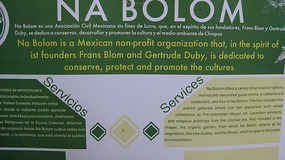

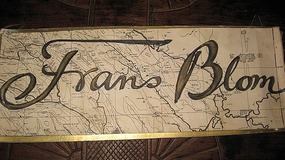
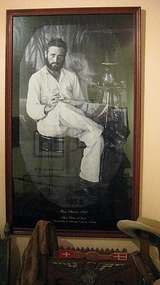

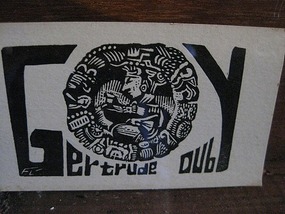
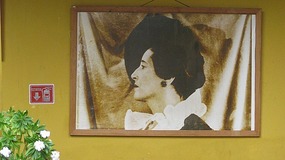




































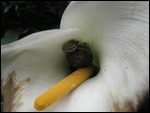
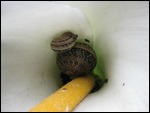

2025-05-22